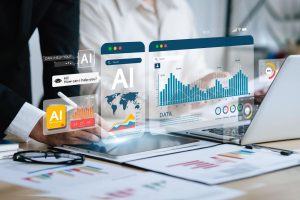Imagine receiving emails that feel like they were made exclusively for you; this is the magic of email segmentation. By organizing email lists into smaller groups based on interests and behaviors, businesses can send messages that truly resonate with their audience.
Email marketing is a powerful tool for keeping clients engaged and driving sales. When a Utah marketing agency uses email segmentation, they better understand the diverse needs of their clientele. This approach leads to higher engagement and better conversion rates.
In this article, we will explore the secrets of effective email segmentation. We will discuss its importance, strategies for segmentation, and best practices. Whether your clients are in the retail industry or the healthcare sector, these tips will help you tailor their email marketing so they get the best results.

What is email segmentation?
Email segmentation is the process of dividing an email list into smaller, more targeted groups. These groups, also known as audience segments, help send relevant messages to each unique set of subscribers. By using email segmentation, businesses can deliver personalized emails, which improves engagement rates and customer satisfaction.
Here’s a quick breakdown of what email segmentation involves:
- Demographics: Group subscribers by age, gender, or location.
- Behavior: Look at customer behavior, like purchase history or email engagement level.
- Interests: Tailor email content to match the interests or preferences of your subscribers.
- Engagement Level: Identify active and inactive subscribers to send relevant content to each group.
For example, a Utah marketing agency could send exclusive offers to loyal customers or retarget inactive subscribers with special promotions. Effective email segmentation often leads to higher conversion rates and more valuable insights into customer preferences.
Email segmentation vs. personalization
Email segmentation and personalization are essential tools in modern marketing, but they are not the same thing. Understanding their differences is key to a successful email marketing strategy.
Email segmentation
Email segmentation involves dividing your email list into smaller, distinct groups called audience segments. These groupings are based on various criteria such as demographics, purchase history, or engagement level. You’ll be able to send more relevant emails by segmenting your list and improving engagement and conversion rates.
For example, a Utah marketing agency might segment its email subscribers based on location, sending specific Utah-related content to those in the area. This ensures the email content is a relevant message to the target audience.
Personalization
On the other hand, personalization involves tailoring the email content for each subscriber. This includes using their name in subject lines or offering recommendations based on their past behavior. Personalized emails boost customer engagement and satisfaction, fostering loyal customers.
Both techniques offer valuable insights, helping you deliver exclusive offers to active subscribers or re-engage inactive subscribers.
By combining email segmentation with personalization, marketers are able to deliver a more targeted and effective email campaign, leading to higher engagement and a better understanding of customer behavior.

Key strategies for segmenting email lists
Let’s explore some key strategies for segmenting your email lists, which will help enhance your email marketing tactics, improve your conversion rates, and increase customer satisfaction.
Demographic data segmentation
Demographic data segmentation is one of the simplest ways to categorize your email subscribers. This method involves breaking your email list down by attributes such as age, gender, income level, and location.
For a travel industry-based marketing agency, segmenting based on age group might be valuable. This way, you’re able to tailor content to young families, solo travelers, or families with teens. You can also create separate lists for more specific characteristics, ensuring the email content is relevant to each segment.
Here’s a quick table displaying how demographic data segmentation might look:
| Audience Segment | Key Attribute | Email Content Focus |
| Young Professionals | Age (20-35) | Career advice, job opportunities |
| Urban Dwellers | Location (City) | City events, public transportation news |
| Young Families | Family Status | Family discounts, child-friendly activities |
By segmenting this way, a Utah marketing agency is able to send personalized emails that speak directly to the unique characteristics of each group.
Behavioral data segmentation
Behavioral data segmentation focuses on how subscribers interact with your emails and website. This includes metrics such as engagement levels, frequency of clicks, and which pages they visit most. You gain valuable insights into your customers’ behaviors and habits by tracking this information. This enables you to send relevant emails they are interested in.
For instance, if a subscriber consistently clicks on content related to sports events, you might consider sending them exclusive offers for related events or products. Monitoring customer engagement through behavioral data helps you craft more engaging email campaigns that better meet your subscribers’ needs.
Purchase history segmentation
Another effective method of email segmentation is using customers’ past purchases. Purchase history segmentation involves creating segments based on what customers have bought before. This strategy allows you to provide personalized content related to their previous purchases.
Suppose a customer has recently purchased hiking gear. In that case, your Utah marketing agency could send follow-up content with hiking tips or discounts on related items such as camping equipment. By tailoring email marketing to their buying patterns, you increase the chances of repeat purchases and nurture loyal customers.
Dynamic segmentation techniques
Dynamic segmentation involves creating segments that update automatically based on real-time data. Email service providers provide tools for setting rules that shift subscribers from one segment to another without manual updates.
For example, once a subscriber surpasses a certain purchase amount, they may move into a ‘VIP Customers’ segment, receiving emails with special deals and exclusive early access to new products. This method ensures relevant content is consistently sent to those most likely to engage.
Collaborative filtering approaches
Collaborative filtering is an advanced email segmentation technique often used in recommendation engines. It suggests content by predicting a subscriber’s preferences based on the habits and preferences of similar users.
Imagine a Utah marketing agency that notices one group of email subscribers regularly clicks on travel content. This pattern suggests to similar subscribers — who haven’t yet interacted with this type of content — that they might also enjoy travel-related emails. Collaborative filtering helps you reach target audiences that might otherwise remain unexplored, ensuring valuable insights are applied to your email marketing strategy.

Industry-specific email segmentation techniques
Retail industry
The retail industry thrives when emails are well-targeted. Effective email segmentation in this sector involves understanding your customers’ behaviors, preferences, and purchase history. Here’s how to segment your email list for retail success:
Purchase history: Track what your customers buy and send relevant emails promoting similar items or complementary products. For example, someone who recently purchased a laptop might appreciate an exclusive offer on laptop bags or accessories.
Engagement levels: Identify loyal customers who frequently open and click on your emails. To increase customer satisfaction further, reward these high-engagement email subscribers with special deals or insider news.
Seasonal shopping: Segment by seasonal needs or shopping habits. For example, send summer-related products to a Utah-based customer in advance and winter gear closer to the snowy season.
Customer behavior: Monitor browsing habits and abandoned carts. Personalized content could include a reminder email about the items left behind or similar items they might find interesting.
Geographic location: Use location data to ensure your emails contain relevant content and offers specific to where your customers actually live.
Retail businesses can enhance customer satisfaction and boost conversion rates by delivering relevant messages and exclusive offers.
Financial services
Email marketing in financial services is all about trust and relevance. The goal is to provide clients with valuable insights tailored to their unique financial situations:
Account types: Segment your audience by the type of account they hold. Customers with savings accounts might appreciate different email content than those with investment accounts.
Life stages: Consider where your customer is in their life journey. Someone planning for retirement will appreciate advice different from that of a young professional starting their career.
Transaction history: Use transaction history to predict needs. For instance, clients regularly making large transactions might benefit from personalized emails about credit lines or commercial loans.
Engagement rate: Identify inactive subscribers and re-engage them with targeted messages. Send special offers or curated advice to remind them of your services.
Customer preferences: Offer clients the option to choose the type of content they’re interested in — stock market tips, banking regulations, or new financial products.
Financial institutions will enhance customer engagement and satisfaction by tailoring communications based on detailed customer profiles.
SaaS (Software as a Service)
Email segmentation dramatically improves user experience and increases renewal rates for SaaS companies. Here’s how to implement a successful email marketing strategy:
User role: Different users often mean different needs. Segment emails for administrators, marketers, and end-users with role-specific tips and updates.
Product usage: Analyze how much and what parts of your software clients use. High-engagement users may appreciate product updates, while new users might need onboarding emails.
Engagement levels: Identify clients who haven’t logged in recently and send reminders with helpful resources to see them back.
Onboarding stage: Determine where users are in their onboarding process. For users in the initial stages, provide personalized emails with tutorial links, webinars, or a quick start guide.
Feedback and reviews: Use customer feedback to segment. Encourage satisfied users to leave online reviews; offer direct customer support to those who need assistance.
By delivering relevant content based on how customers interact with your software, SaaS businesses can maintain a high level of customer satisfaction.
Healthcare sector
In healthcare, precise and empathetic communication is crucial. Email segmentation allows healthcare providers to connect with patients effectively:
Patient demographics: Segment by age, gender, or health condition to provide information that is directly relevant to each group.
Appointment history: Customize reminders and follow-up emails based on past and upcoming appointments.
Health interests: Offer personalized emails or newsletters with health tips geared toward specific health concerns, such as diabetes management or heart health tips.
Medication alerts: Send reminders for prescription refills based on medical records to ensure medication adherence.
Feedback and surveys: Segment patients who regularly provide input and engage them with more focused content or thank-you messages.
Insurance type: Tailor content based on the patient’s insurance, helping them understand coverage specifics and out-of-pocket costs.
By carefully segmenting your email list in the healthcare sector, you can ensure that you’re sending highly relevant emails that meet patients’ needs and preferences.

Best practices for effective email segmentation
Regularly updating segmentation criteria
Keeping your email list fresh is very important. Like how our favorite food or toys change over time, your client’s needs may change, too. One way to keep your email campaigns relevant is by regularly updating your email segmentation criteria.
Use purchase history: If a customer recently bought something, send them emails about similar products. This helps in sending relevant messages that keep them interested.
Check engagement levels: See how often people open your emails. You may want to send more emails to those who enjoy opening them and refine the strategy for those who don’t.
Identify loyal customers: Some customers are loyal because they frequently open your emails or make purchases. It’s wise to reward them with exclusive offers.
Let’s imagine you have a client who sells both shoes and toys. If someone buys a pair of shoes, send them more shoe options! If they enjoy looking at toys, show them the newest toys in the store.
Testing and optimization
Testing is like trying out different outfits to see which one you like best. For email marketing, you need to test everything. This will help your agency find out what works best for each audience segment.
Try different subject lines: The subject line is the first thing people see. Try using different words to see which ones make them want to open the email.
Experiment with email content: Like each friend likes different games, each client has a favorite topic. See which email content makes people the happiest and use it more.
Monitor conversion rates: It’s like keeping score in a game to see who’s winning. Look at how your emails convert by leading to purchases or visits to your site. Make notes of what works well.
By testing, you ensure your email campaigns stay exciting and aren’t the same old emails everyone ignores. This helps improve engagement rates and keeps everyone eager for the next email.
Segmentation tools and software
Like a chef needs tools to cook, you need the right software to do email segmentation well. These tools can provide valuable insights and turn an ordinary job into a masterpiece.
Choose the right Email Service Providers (ESPs): An ESP helps you organize your email list and ensures you send emails on time. It’s like having a good assistant who remembers everyone’s favorite treat.
Use advanced segmentation features: Some tools offer special features that help group customers by behavior, location, or interests. Think of it as putting books in the right section of a library – it makes finding the right book much easier.
Automate personalized emails: Automation can help send personalized emails without you having to do it manually every time. It’s like having a magic wand that sends out fun, personalized invites to a birthday party.
Some popular segmentation tools could include Mailchimp, Constant Contact, or Brevo. These tools help make your email marketing strategy more efficient and effective. They ensure your emails are engaging and tailored perfectly to each slice of your diverse clientele.
To sum it all up, a Utah marketing agency or any agency can flourish using smart email segmentation. By following these best practices, regularly updating criteria, testing strategies, and using the right tools, you can offer personalized content. Your emails become exciting, and you eagerly await messages that deliver beyond expectations. Happy emailing!
Work with Revity Marketing Agency
Ready to unlock the full potential of your email marketing campaigns? At Revity Marketing Agency, we specialize in creating customized email strategies that resonate with your diverse clientele.
Our experts are here to help you master the art of segmentation, ensuring that your messages reach the right audience with the right message at the right time. Don’t settle for one-size-fits-all solutions; let us tailor your email marketing to meet the unique needs of each segment of your audience.
Contact Revity today, and let’s start crafting email campaigns that truly deliver.







